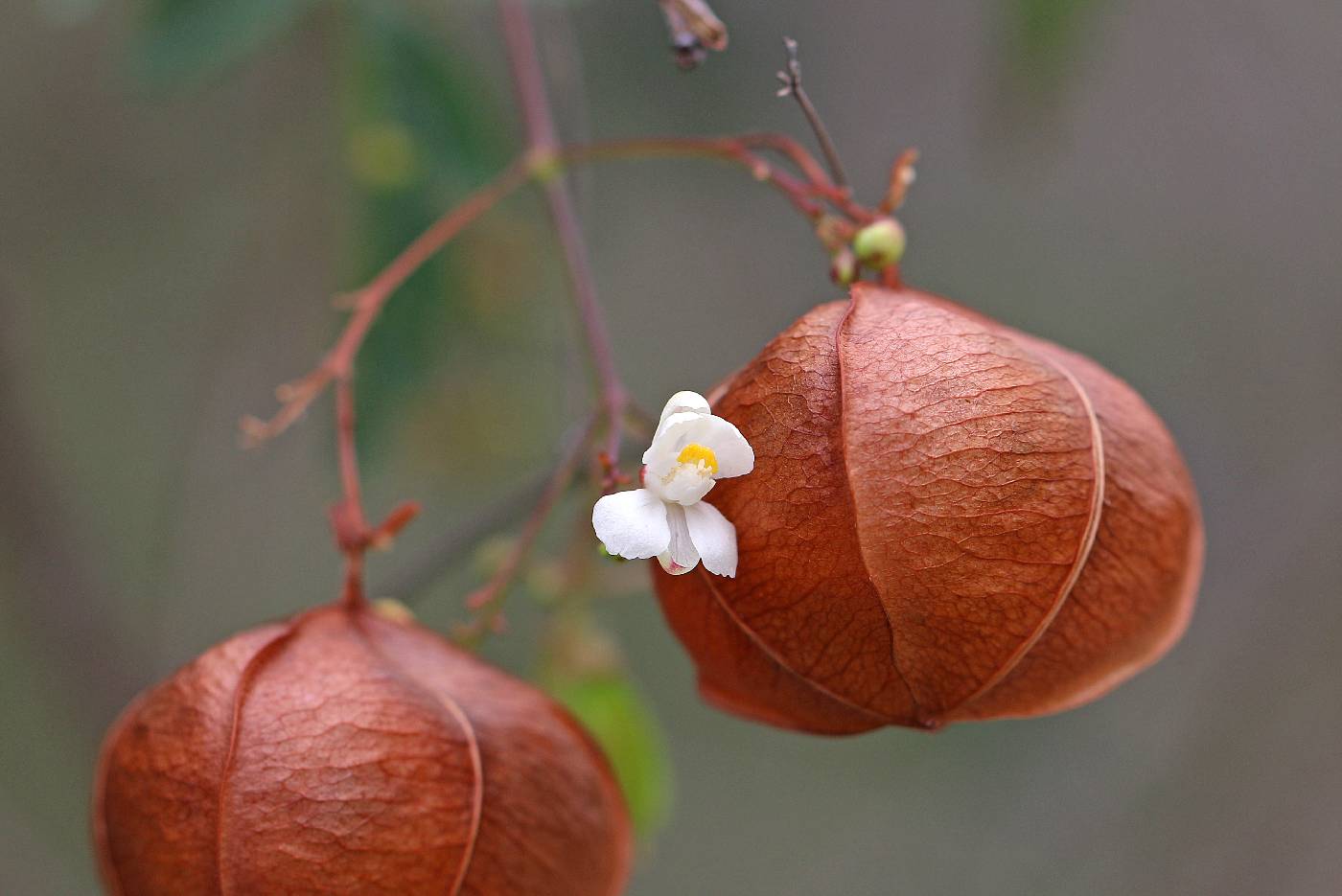Cardiospermum
|
Family: Sapindaceae |
PLANT: Herbaceous or suffruticose vines, monoecious, dioecious or polygamodioecious. LEAVES: biternate or trifoliolate, petiolate, with minute stipules. INFLORESCENCE: axillary, corymbose or racemose-paniculate, the peduncle on an axis just above two opposing tendrils. FLOWERS: white, yellow or light pink, slightly zygomorphic; sepals 4(-5), the 2 outer ones smaller; petals 4, with petaloid scales; nectar-disc zygomorphic with a gland opposite each of the two upper petals; stamens 8, unequal in length, the anthers sterile in pistillate flowers; ovary 3-loculed, rudimentary in staminate flowers; the placentation axile, with 1-ovule per locule, stigmas 3; style short. FRUIT: a membranaceous, inflated, 3-angled capsule. SEEDS: globose, black except for a light-colored, ovate, reniform to semicircular hilum. 2n = 20, 22 REFERENCES: Salywon, Andrew. 1999. Sapindaceae. Ariz. - Nev. Acad. Sci. 32(1). Sep 4, 2 large, 2 small; pet 4, somewhat unequal, each with an erect petaloid appendage at base; nectary-disk unilateral, biglandular; stamens 8; fr a bladdery-inflated, 3-locular and 3-lobed capsule; herbs, climbing by axillary tendrils, with ternate or biternate lvs and small, unisexual, white to red fls in small clusters, the long peduncle bearing tendrils near the fls. 14, mainly trop. Amer. Gleason, Henry A. & Cronquist, Arthur J. 1991. Manual of vascular plants of northeastern United States and adjacent Canada. lxxv + 910 pp. ©The New York Botanical Garden. All rights reserved. Used by permission. |

